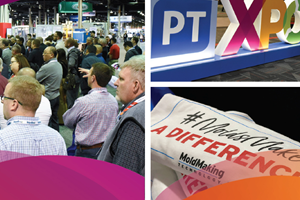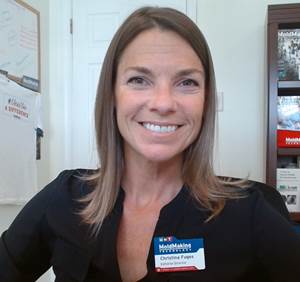Leadtime Leader Q&A: X-Cell Tool and Mold
The current Leadtime Leader, X-Cell Tool and Mold, shares current capabilities and a glimpse of the changes occurring inside their molding operations.
X-Cell enjoys an impressive first-pass quality rate of 99.7% and an on-time delivery rate average of 94.7%. How do you help maintain these statistics on the molding side?
Aaron Bentley, molding manager: We do a lot of parts sampling, troubleshooting and mold validation. When we build new molds, we want to ensure that they go to our customers’ facilities without any issues for a smooth transition to production. Validation services can include PPAP, first article inspection, Design of Experiments (DoE), IQ/OQ/PQ process validations, factory acceptance tests and more. Some customers will have a representative here to go through the validation process with us. It is a hand-in-hand, teamwork-based procedure to help them get the results they require. If a customer wants a representative from X-Cell to be at his plant to do a sampling, we’re there. We will do whatever it takes to meet or exceed our customers’ needs and expectations.
In addition, with every new mold, we go through the scientific injection molding (SIM) process. This does not necessarily mean that we run a full-blown SIM study on every tool. Rather, we tailor the sampling and the qualification plans used to each customer’s needs. For instance, we might do a gateway study, a viscosity curve, a short-shot progression or a pressure-loss study. We can conduct any of those tests as needed, and we have a set process checklist that we use for every new mold to ensure the best results possible and no unexpected issues. Many customers have their own set of protocols for validating the molds, and we will gladly adapt ours to include their processes, too. If there is any issue, we correct it the right way. Band-aid fixes are not acceptable. In this way, we can document and build historical knowledge about each mold should it ever come back to us for repair or maintenance, and this results in a huge time savings for the customer, not to mention shorter lead times for us.
We also have the capability to provide a full, turnkey program for customers. This is where we take delivery, at our facility, of the molding machine our customer plans to use and build a mold for it, incorporate robots, assembly or inspection equipment, then qualify the entire system with the mold and machine simultaneously. Then we ship the entire setup to the customer. It is an expensive process to do because you have to ship the molding machine twice, but it benefits the customer, especially when we are building complex systems like this with very tight tolerances.
Do you offer production molding at your facility?
Bentley: Today, we do offer some low-volume production molding, and we are expanding our molding facility into our new, 21,000-square-foot addition. Currently, we have seven presses ranging from a seven-ton tabletop machine up to a 390-ton Toshiba EC390SX all-electric horizontal press. We also have a Nissei 77-ton vertical press, which is used for more manual processing like insert molding, over molding and reel-to-reel, where we move stamped metal parts into the press and shoot over them. We do that for customers in automotive and electronics industry, mainly.
We predominantly mold medical parts, and that makes up about 80 to 85% of our molding business. X-Cell has two ISO Class 7 soft-side clean rooms for sampling or production and is ISO 13485 certified for molding medical device components. In addition to that, we mold caps and closures, and parts for consumer goods and the food and beverage markets.
Related Content
Moldmaking, the Relentless Pursuit of Innovation … Oh Yeah!
Innovation was at the root of the presentation lineup for the 2023 MoldMaking Conference, which included a heavy focus on automation, collaboration and communication, as well as mold design, talent development, reshoring and sustainability.
Read MoreWhere Mold Manufacturing and Plastics Processing Connect
The Moldmaking Pavilion is one of seven pavilions returning to the show that houses exhibitors offering technology and service solutions for your specific moldmaking needs.
Read MoreMore Than Moldmaking at PTXPO 2023
The Moldmaking Pavilion returns to the Plastics Technology Expo (PTXPO) March 28-30, 2023, at the Donald E. Stephens Convention Center in Rosemont, Illinois, but there’s more to discover than moldmaking.
Read MoreMoldMaking Technology's Leadtime Leader Awards Competition Returns!
After a brief hiatus, MoldMaking Technology’s Leadtime Leader Awards Competition is back!
Read MoreRead Next
How to Use Strategic Planning Tools, Data to Manage the Human Side of Business
Q&A with Marion Wells, MMT EAB member and founder of Human Asset Management.
Read MoreAre You a Moldmaker Considering 3D Printing? Consider the 3D Printing Workshop at NPE2024
Presentations will cover 3D printing for mold tooling, material innovation, product development, bridge production and full-scale, high-volume additive manufacturing.
Read MoreReasons to Use Fiber Lasers for Mold Cleaning
Fiber lasers offer a simplicity, speed, control and portability, minimizing mold cleaning risks.
Read More




















